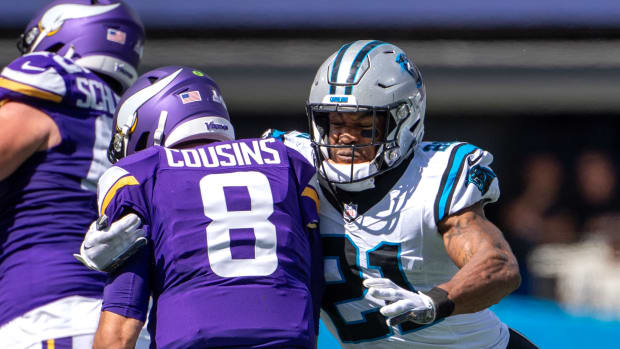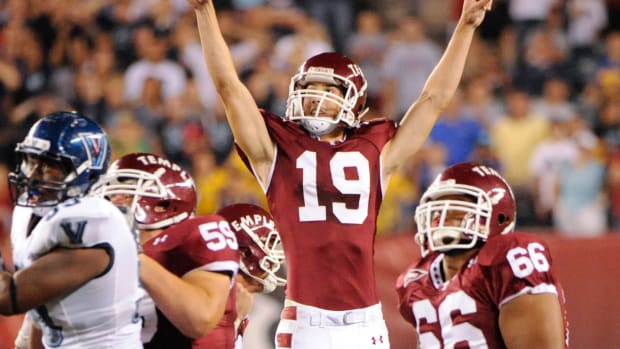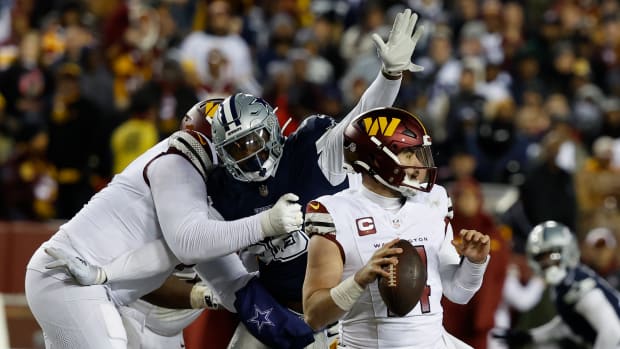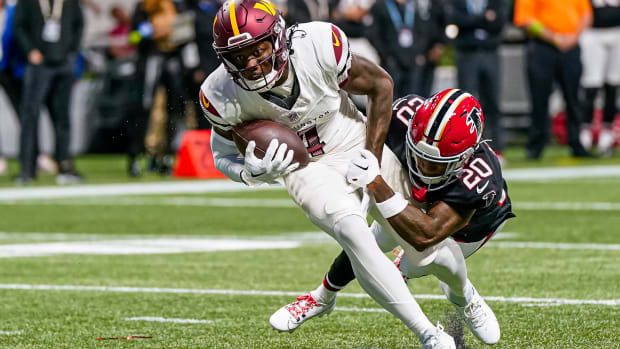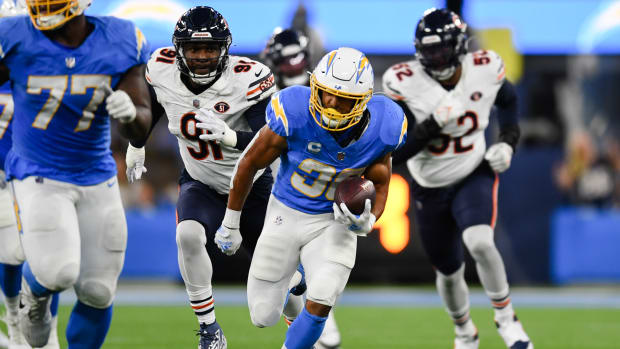Stay Away from the Redskins, Mr. Heisman Winner!
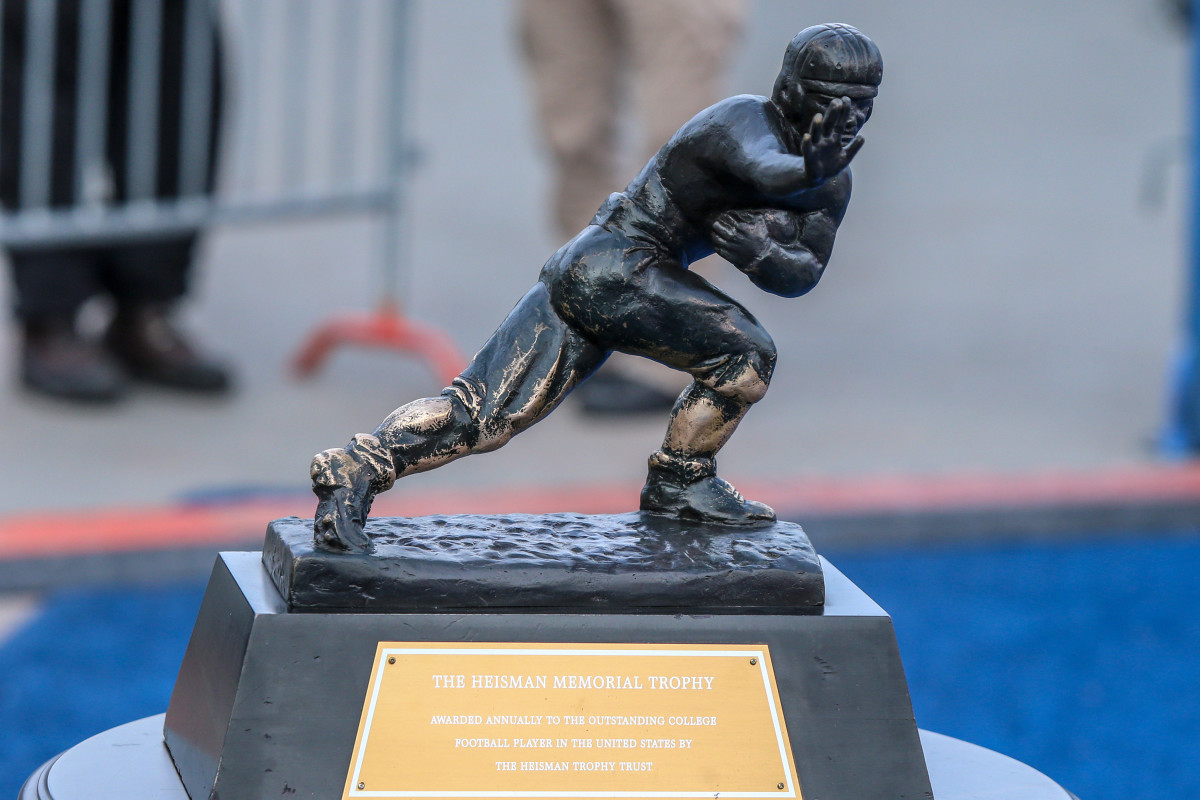
The Heisman has not always been kind to the Washington Redskins.
Saturday will be the annual awarding of the 13½-inch-tall, 25-pound bronze Heisman to the player voted the nation’s best in college football.
LSU Quarterback Joe Burrow appears to be the favorite to win the award, and while many Redskins fans have voiced a desire to see Burrow behind center next season, early prognostications are he could be drafted first by the Cincinnati Bengals.
The Redskins have had six Heisman winners later wear the burgundy and gold. Others have won the Heisman and then become associated with the Redskins later on.
Former Redskins Head Coach Steve Spurrier, when winning the Heisman in 1966, presented it to university president Dr. J. Wayne Reitz so that the award could be shared by Florida students and faculty.
From that time forward, the Downtown Athletic Club has issued two trophies, one to the individual winner and one to his school.
Vic Janowicz an Ohio State halfback collected the 1950 Heisman.
Following his unsuccessful MLB pursuit, he returned to the Redskins but only played two seasons, amassing 99 carries and 410 yards.
In 1956 Janowicz was in a serious car accident which left him partially paralyzed from brain damage, ending his career.
Gary Beban was the 1968 winner.
The UCLA QB drafted by the Rams, was unable to agree on a contract, and traded to the Redskins.
The Redskins thought they were obtaining Sonny Jurgensen’s (age 34) successor.
Beban however only attempted one pass in two seasons backing up the successful Jurgensen.
He was released by Washington during the 1970 training camp and later by Denver and retired.
In the 1992 NFL Draft, the Super Bowl champion Redskins, owned two selections in the first round.
The Redskins traded those two choices up to the number four spot overall and drafted Michigan WR Desmond Howard.
Howard disappointed as a receiver catching only 123 passes in his 12 years in the NFL.
Yet later Howard was a very effective returner in Green Bay and Oakland.
Howard returned eight NFL punts for a TD and one kickoff return for Green Bay against the Patriots in SB XXXI.
Repeating history 20 years later, the Redskins traded for 2011 Heisman winner Robert Griffin III.
Griffin experienced huge success in 2012 running the Shanahan’s read-option.
Griffin rushed for 815 yards at 6.8 yards a carry, tops in the NFL.
The read-option was such a perfect fit for Griffin, opening up huge passing lanes.
He completed 65.6% of his passes, amassing 3,200 yards, including an impressive 20 touchdowns and only five interceptions.
After Griffin was injured twice in a playoff loss to Seattle (neither play a read-option), Griffin returned in the off-season declaring to the Shanahans he would no longer run the read-option and had the backing of upper management.
Griffin would proclaim publicly he was as good a drop-back passer as Aaron Rodgers and Tom Brady; he struggled the next two seasons, and has yet to find success in the NFL in Cleveland or Baltimore.
QB Danny Wuerffel won four straight SEC championships for the Florida Gators and the 1996 Heisman.
Wuerffel was effective in the Steve Spurrier system at Florida.
Yet after five mostly unsuccessful seasons (New Orleans 3, Green Bay 1, Chicago 1), Wuerffel was brought to Washington in 2002 to play again for Spurrier.
He would appear in seven games (starting four), throwing for 719 yards with three touchdowns and six interceptions, ending his career.
George Rogers the 1980 Heisman winner was a first round draft choice of the New Orleans Saints and his 1,674 rushing yards led the NFL his rookie season.
After four seasons accumulating 4,267 yards, Rogers was traded to the Redskins.
Rogers in 1985 amassed 231 carries while gaining 1,093 yards (4.7 yards per attempt).
Rogers carried the work load in 1986 with 303 carries, 1,203 yards (4.0 yards per attempt) and 18 touchdowns.
But with his bruising, non-elusive running style he was breaking down in 1987.
After Rogers gained only 613 yards, Joe Gibbs started Timmy Smith in Super Bowl XXII and Smith rushed 204 yards, a Super Bowl record in the Redskins 42-10 victory over the Broncos.
Seeing the end had come, Rogers retired.
Joe Theismann (pronounced Thees-man) was about to begin his 1970 senior season at Notre Dame when Roger Valdiserri, the Notre Dame Sports Information Director, called Joe into his office and promptly insisted Theismann begin pronouncing his name as (Thighs-man) rhyming with Heisman.
Theismann finished second in the Heisman voting to Stanford QB Jim Plunkett.
Theismann would later lead the Redskins to three consecutive NFC East titles, two Super Bowls, a Super Bowl XVII win, and he was the 1983 NFL MVP throwing for 3,714 yards, 29 touchdowns and 11 interceptions.
Ed Smith, a New York University running back was drafted by the Boston Redskins in the initial 1936 NFL Draft.
Smith, ran for the Redskins in 1936, but only rushed seven times for 39 yards and after the following season in Green Bay he retired.
Smith, actually never won the Heisman, but he did make Heisman history in 1935.
Sculptor Frank Eliscu requested his former high school teammate Smith, pose for him while Eliscu sculpted an image that would later become the Heisman Trophy pose.
Oddly Smith for decades did not realize it was his pose that resulted in the Heisman Trophy.
However in 1985 the Downtown Athletic Club presented Smith with his own Heisman Trophy.
Ivan Lambert is a lifelong die-hard Washington Redskins fan, raised in Berryville, Virginia. He is married and the father of two fine young men. He is currently a sports correspondent for The Ledger in Lakeland, Florida and can be found on Twitter @IvanLambert18

